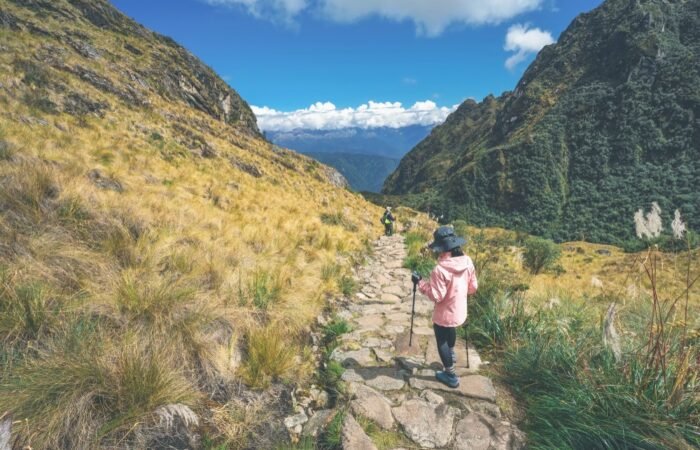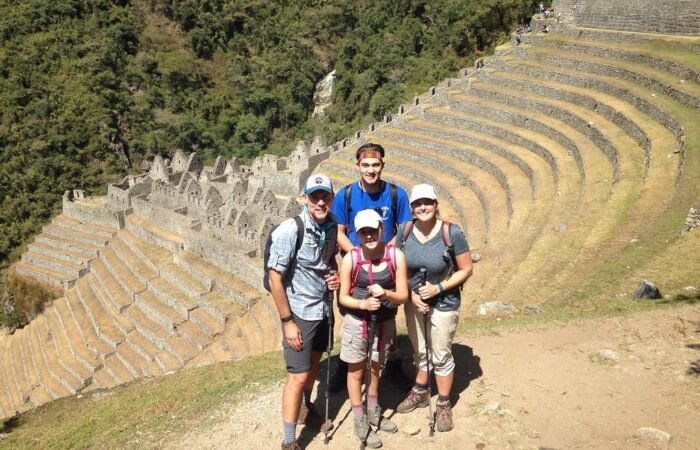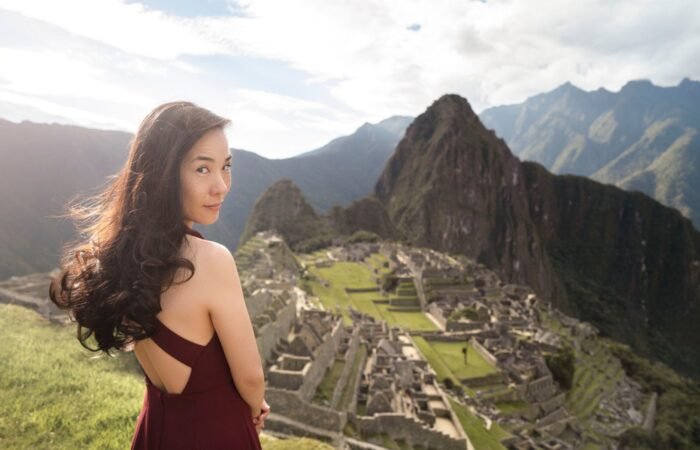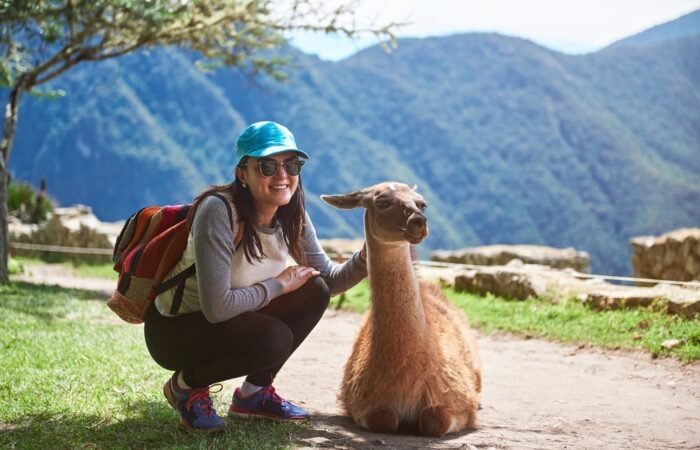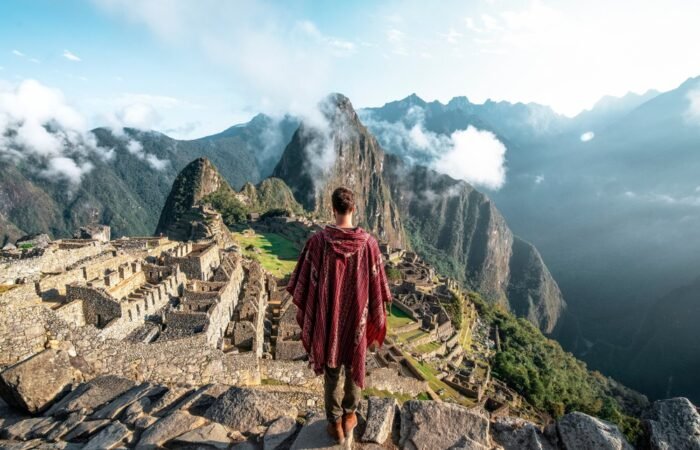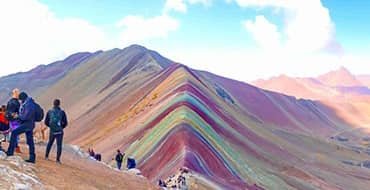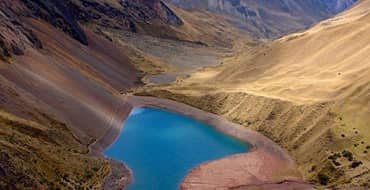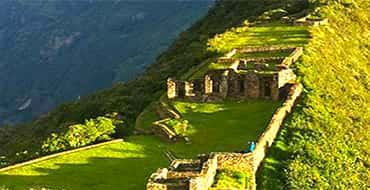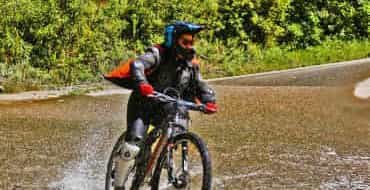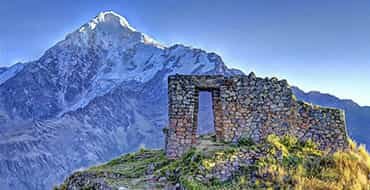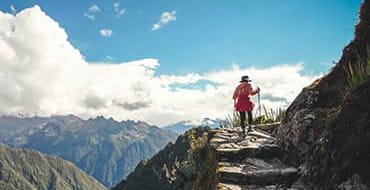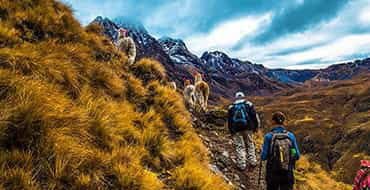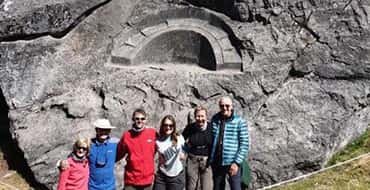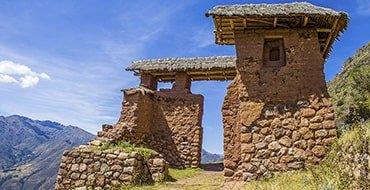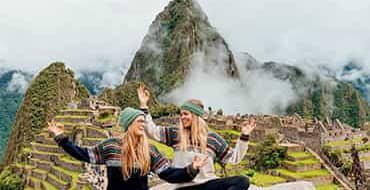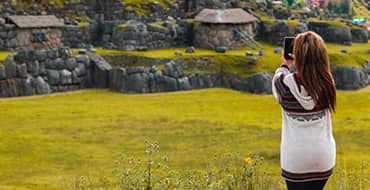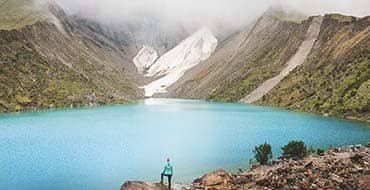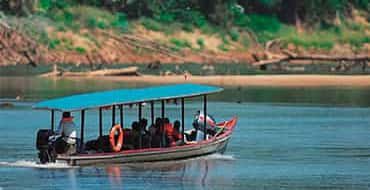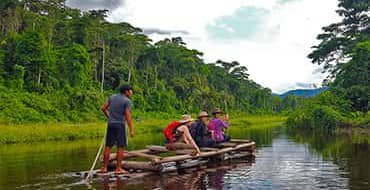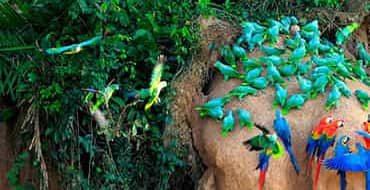

Introduction to Maras and Moray
The Maras and Moray tour presents an exceptional opportunity to explore two historical and culturally significant sites located in the Andean region of Peru. Situated approximately 50 kilometers northwest of Cusco, both destinations are easily accessible, making them a popular choice for travelers seeking to immerse themselves in the rich heritage of the Inca civilization. Visitors often embark on guided tours or independent excursions, allowing for flexibility in their journey to these remarkable sites.
Maras is renowned for its impressive salt mines, staggering on the mountainside and showcasing a traditional method of salt production that dates back to pre-Columbian times. The salt evaporation ponds are meticulously maintained by local families and present a visually appealing landscape characterized by various shades of white, pink, and brown. Each pool, fed by a natural saline spring, reflects a labor-intensive practice passed down through generations and offers insight into the livelihood of the local population.
On the other hand, Moray is celebrated for its unique agricultural terraces, which were used by the Incas for experimental farming. The site consists of a series of circular depressions that create microclimates, enabling ancient farmers to cultivate diverse crops at varying altitudes. The intricate design of these terraces demonstrates the advanced agricultural techniques employed by the Incas, serving as a testament to their innovative spirit and understanding of their environment.
Together, Maras and Moray provide visitors with a captivating glimpse into the agricultural and economic practices that shaped the Inca Empire. While exploring these sites, travelers can gain a deeper appreciation for the interplay between culture and landscape, enhancing their overall experience in the heart of Peru. The combination of stunning views, historical significance, and local craftsmanship makes the Maras and Moray tour an essential inclusion in any travel itinerary focused on Peru’s rich heritage.


Getting to Maras and Moray
Reaching the enchanting sites of Maras and Moray from the historic city of Cusco is a crucial aspect of experiencing these remarkable destinations. The distance between Cusco and Maras is approximately 50 kilometers, while Moray lies about 7 kilometers further, making effective transportation planning essential for visitors.
Travelers have several transportation options to reach Maras and Moray. The most common choice is to take a shared taxi or colectivo, which are affordable alternatives. Shared taxis depart from the Santiago neighborhood in Cusco and offer a convenient ride directly to the entrance of Maras. For those preferring a more private experience, hiring a taxi for the day can ensure flexibility in your itinerary, allowing for a visit to both sites at your own pace.
Alternatively, various guided tours are available, which often include transportation, a knowledgeable guide, and insights into the rich history of the sites. Most tours will pick you up from your hotel in Cusco and provide a seamless experience, which is particularly beneficial for travelers unfamiliar with the area or those who may not speak Spanish.
While public transportation options, such as buses, are available, they may not be the most efficient means of travel due to a lack of direct routes. It is advisable to allocate around one to one and a half hours for the journey to Maras, and an additional 20-30 minutes to reach Moray, depending on traffic and road conditions. The roads leading to these sites can be rugged and winding, so travelers should be prepared for the terrain.
In conclusion, whether opting for a guided tour or independent travel, understanding the various transportation options available from Cusco is key to fully enjoying the breathtaking landscapes and rich cultural heritage of Maras and Moray. Proper planning will ensure a memorable visit to these captivating sites.

Exploring the Salt Mines of Maras
The Salt Mines of Maras, located in the Sacred Valley of Peru, present a captivating glimpse into both natural beauty and human ingenuity. These terraced salt ponds, known as “salineras,” have been utilized for salt extraction since pre-Incan times and continue to be a vital source of salt for the surrounding communities. The landscape showcases a series of over 3,000 small pools cascading down the hillside, creating a stunning mosaic of white and pink hues that is particularly striking against the backdrop of the Andes Mountains.
Traditionally, the salt mining process involves channeling water from the saline springs located above the terraces into the individual pools. As the sun heats the water, it gradually evaporates, leaving behind a crystallized layer of salt. Local families have been practicing this method for generations, passing down their knowledge and skills over the years. This traditional technique not only sustains the livelihood of the local community but also offers insight into the harmonious relationship between the people and the natural environment.
In terms of scenic allure, Maras is a photographer’s paradise. The contrast of the white salt against the earthy tones of the mountains and the bright blue sky creates an otherworldly atmosphere. Optimal photography spots include viewpoints from above the terraces, where visitors can capture the full expanse of the salineras. Early morning or late afternoon light offers the best opportunities for stunning images of the shimmering salt ponds, as the changing light transforms the landscape throughout the day.
Exploring the Salt Mines of Maras not only provides a unique cultural experience but also an opportunity to appreciate the intricate craftsmanship and rich history behind this remarkable site. Engaging with local artisans and understanding their techniques can greatly enhance one’s visit, making it a memorable stop on any tour of the Sacred Valley.

Unveiling the Incan Agriculture of Moray
Moray presents a fascinating glimpse into the agricultural ingenuity of the Inca civilization through its distinct circular terraces. Located in the Sacred Valley of Peru, this archaeological site features a series of concentric platforms, which are believed to have been used for agricultural experimentation. Each terrace has varying microclimates, allowing the Incas to cultivate a diverse range of crops and understand the effects of altitude and temperature on agricultural yield. This unique structure serves as a noteworthy example of the Incan ability to manipulate their environment for agricultural efficiency.
Theories surrounding the purpose of Moray suggest it functioned as an agricultural laboratory, where Inca farmers could refine their practices and test a variety of crops, including quinoa, potatoes, and maize. Understanding how different altitudes affected crop growth was crucial for the Incan society, as they sought to optimize food production to support their expanding empire. Additionally, the site is thought to have played a role in the training of agricultural specialists, further emphasizing its importance in Incan civilization.
When visiting Moray, appreciating the site’s architecture and layout is paramount to fully grasping its historical significance. The precise engineering of the terraces showcases the advanced understanding the Incas had of irrigation, slope stability, and microclimatic conditions. The circular design is not only aesthetically pleasing but also highly functional, allowing for efficient drainage and sunlight exposure. As visitors walk amongst these impressive terraces, they can envision the agricultural experiments that took place, reinforcing the connection between this ancient site and the thriving civilization that once inhabited it.

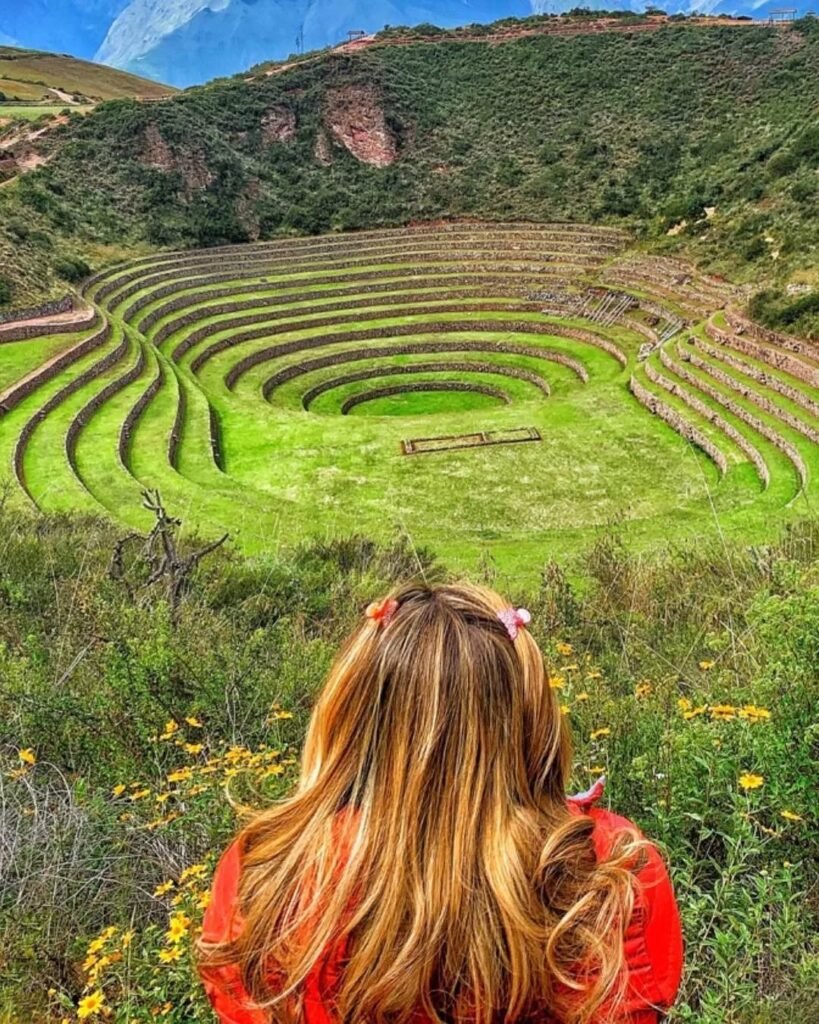
Cultural Significance of Maras and Moray
Maras and Moray, two remarkable sites located in the Sacred Valley of Peru, are steeped in rich cultural heritage that continues to shape the lives of local communities today. The traditional practices of the inhabitants are deeply intertwined with the history and essence of these sites, reflecting a vivid tapestry of Andean culture that has been preserved over centuries.
Maras, known for its stunning salt terraces, has been a vital source of salt production since the pre-Columbian era. The salt flats, or “salineras,” are not only significant for agricultural practices but also play a crucial role in the socio-economic landscape of the region. Local families have maintained the traditional methods of salt extraction, fostering a unique connection to the land. This age-old practice serves as a reminder of Indigenous ingenuity and sustainability, allowing visitors to appreciate the labor and tradition that go into producing this essential mineral.
In contrast, Moray is renowned for its ancient agricultural terraces, which serve as an exceptional example of Incan agricultural innovation. The circular design of these terraces creates microclimates that allowed the Incas to experiment with various crops, significantly contributing to biodiversity in the region. This historical context provides insight into the sophisticated techniques employed by the Incas, influencing contemporary agricultural practices. Visitors can engage with local farmers, learning about the unique crops grown in Moray and the importance of preserving these traditions.
Additionally, visitors are encouraged to experience local festivals and events that illuminate the cultural significance of Maras and Moray. Celebrations such as the “Inti Raymi” (Festival of the Sun) and various harvest festivals provide opportunities for immersion in cultural practices, featuring lively music, dance, and traditional rituals. These moments offer a deeper connection to the heritage of the Andean people, making the exploration of Maras and Moray a multifaceted experience that extends beyond mere observation.


Tips for a Memorable Tour Experience
Embarking on a tour to the remarkable sites of Maras and Moray is an exciting adventure that warrants careful planning. To maximize enjoyment and comfort while exploring these enchanting locations, consider the following practical advice. First and foremost, clothing choices are paramount. Dress in layers to accommodate the unpredictable weather of the Andean region, where temperatures can fluctuate significantly throughout the day. Lightweight, breathable fabrics will keep you comfortable during the warmer hours, while a good-quality jacket will protect against the chill when the sun sets.
Additionally, the right footwear is essential for navigating the rocky paths and uneven terrain found at both Maras and Moray. Opt for sturdy walking shoes or hiking boots that provide adequate support. Include a small backpack to carry essential items such as a water bottle, sunscreen, and snacks, as you may spend several hours exploring. Staying hydrated is crucial, especially when engaging in physical activity at high altitudes.
For travelers sensitive to altitude, it is advisable to spend a day acclimatizing in Cusco before heading to these sites. This practice can help mitigate the risk of altitude sickness. Moreover, the best time to visit Maras and Moray is during the dry season, which runs from May to September. This period offers clearer skies and more comfortable temperatures, making it ideal for walking tours and photography.
Lastly, photography enthusiasts will appreciate the stunning landscapes and unique features of these sites. To capture the vibrant colors of the salt ponds and the intricate agricultural terraces, bring a camera with a zoom lens and arrive early to take advantage of the golden hour lighting. By following these tips, you can ensure a rewarding and unforgettable experience in the breathtaking surroundings of Maras and Moray.


Suggested Itineraries for a Maras and Moray Day Trip
When planning a visit to Maras and Moray, travelers have the flexibility to choose from various itineraries, tailored to suit different timeframes and interests. Whether opting for a half-day excursion or a more leisurely multi-day experience, each itinerary offers unique opportunities to explore these captivating sites fully.
For those limited on time, a half-day itinerary might include an early morning departure to Moray, where visitors can admire the stunning agricultural terraces—an incredible feat of Incan engineering. A guided tour can enrich the experience by providing insights into their historical significance and function. Following the visit, a short trip to the nearby salt mines of Maras allows guests to understand the traditional methods of salt extraction that have been used for centuries. This half-day trip can be accomplished comfortably within a few hours and offers a taste of the region’s rich history.
Alternatively, for a full-day experience, one can start at Moray for a more in-depth exploration of the terraces, coupled with a visit to the nearby archaeological site of Chinchero, known for its vibrant textiles and traditional Andean culture. After lunch, the itinerary can continue to Maras, allowing ample time to wander through the salt pans and appreciate the picturesque landscape. Consider a picnic lunch to enjoy with scenic views, or eat at a local eatery to savor authentic Peruvian cuisine.
For those who wish to immerse themselves in the culture and geography, a multi-day itinerary is ideal. This may involve spending the first day at Moray and Maras, then dedicating subsequent days to nearby attractions such as the Sacred Valley, Ollantaytambo, or even hiking trails around Cusco. Each day can be strategically structured to include local interactions and experiences that highlight the customs and traditions of the inhabitants. By combining these destinations, visitors can create lasting memories while delving deeper into the rich tapestry of Peru’s history and heritage.


Local Cuisine: What to Eat During Your Visit
The region surrounding Maras and Moray is renowned not only for its stunning landscapes and historical significance but also for its rich culinary heritage. A visit to these enchanting sites offers an opportunity to indulge in a variety of local dishes that reflect the agricultural abundance of the area. One of the must-try dishes is ‘Cuy Chactado,’ or fried guinea pig, which holds a special place in Andean cuisine and is known for its unique flavor and texture. This dish is often served with potatoes and a spicy sauce, making it a satisfying meal that is both traditional and delicious.
Another iconic dish to savor is ‘Pachamanca,’ a traditional Peruvian meal cooked in the earth. It typically features marinated meats, potatoes, and various vegetables, all slow-cooked in a pit. This method not only enhances the flavors but also adds a touch of authenticity to the dining experience. Visitors can often find eateries specializing in these traditional dishes in the nearby towns, where local chefs proudly showcase their heritage through food.
For a lighter option, try ‘Salchipapas,’ a popular street food consisting of fried sausages served with fries and various condiments. This dish is widely available in local markets and makes for a quick and flavorful snack during your tour. In addition to these selections, sampling local cheeses and fresh fruits available in markets such as the one in Chinchero can add further richness to your culinary journey.
As with any travel, food safety should be a priority. Opt for well-cooked meals and drinks from reputable establishments. It is advisable to consume bottled water and refrain from eating raw foods unless you are certain of their safety. By following these guidelines, you can enjoy the gastronomic delights of the region while ensuring a safe and pleasurable experience during your Maras and Moray tour.


Conclusion: The Lasting Memories of Maras and Moray
Visiting the mesmerizing sites of Maras and Moray leaves an indelible mark on the hearts and minds of travelers. These remarkable locations not only showcase the stunning beauty of the Peruvian landscape but also immerse visitors in the rich tapestry of Incan heritage. The terraces of Moray, believed to be an agricultural experimentation site, illustrate the incredible ingenuity and adaptability of the Incas. Located at a high altitude, Moray’s concentric circles serve as a testament to the advanced understanding of microclimates and their effects on crop growth. This innovative approach to agriculture demonstrates how the Incas thrived in challenging environments.
In contrast, the salt mines of Maras offer a striking image of traditional practices still in use today. The sight of thousands of salt ponds glistening under the sun presents a visual spectacle that is both captivating and educational. As visitors explore the area, they can witness firsthand the painstaking salt extraction process that has been passed down through generations. The sense of community among the local salt farmers also enriches the experience, highlighting the importance of sustainable practices and cultural continuity in the region.
Reflecting on these unique aspects, one can appreciate how each site contributes significantly to a deeper understanding of Peru’s cultural identity. The Maras and Moray tour encourages visitors to engage with the history and traditions of the area, fostering a greater respect for ancient practices that have endured through time. As you reminisce about your journey, consider how these unforgettable experiences have shaped your perspective on Peruvian heritage. Readers are invited to share their memories and tips, enhancing the collective appreciation of these enchanting sites.
